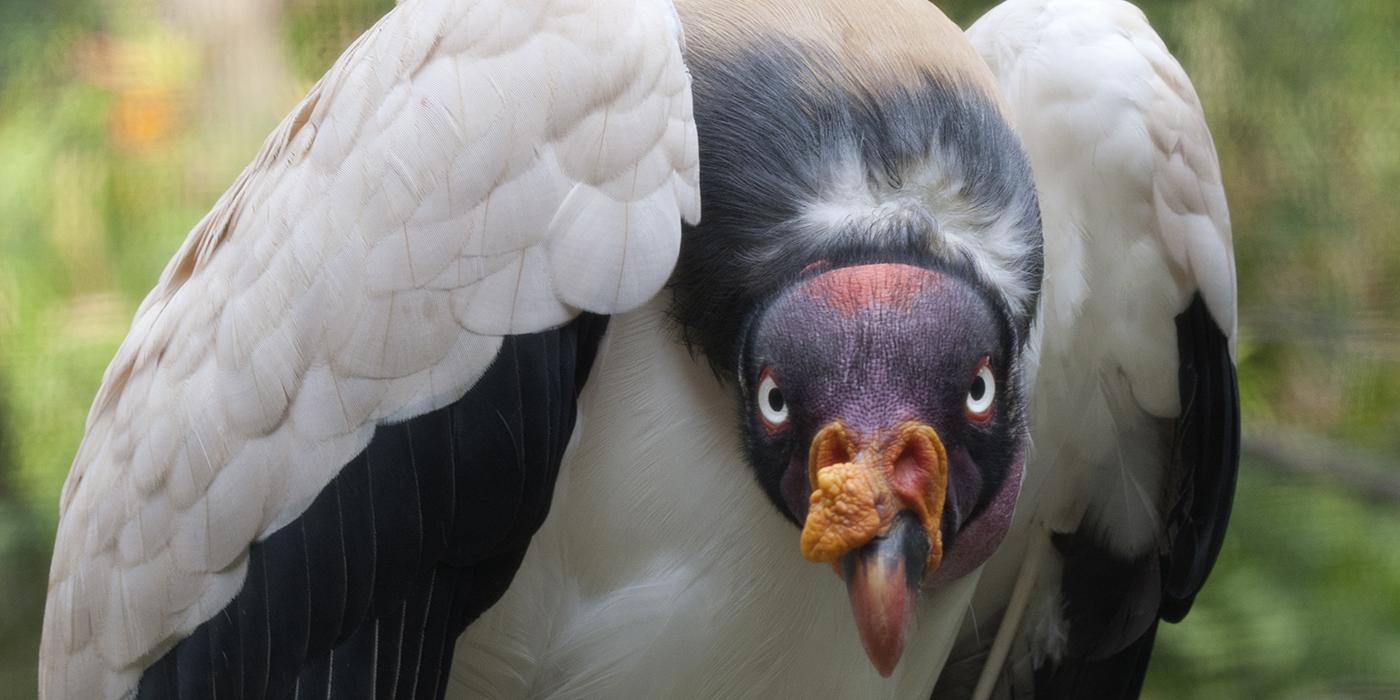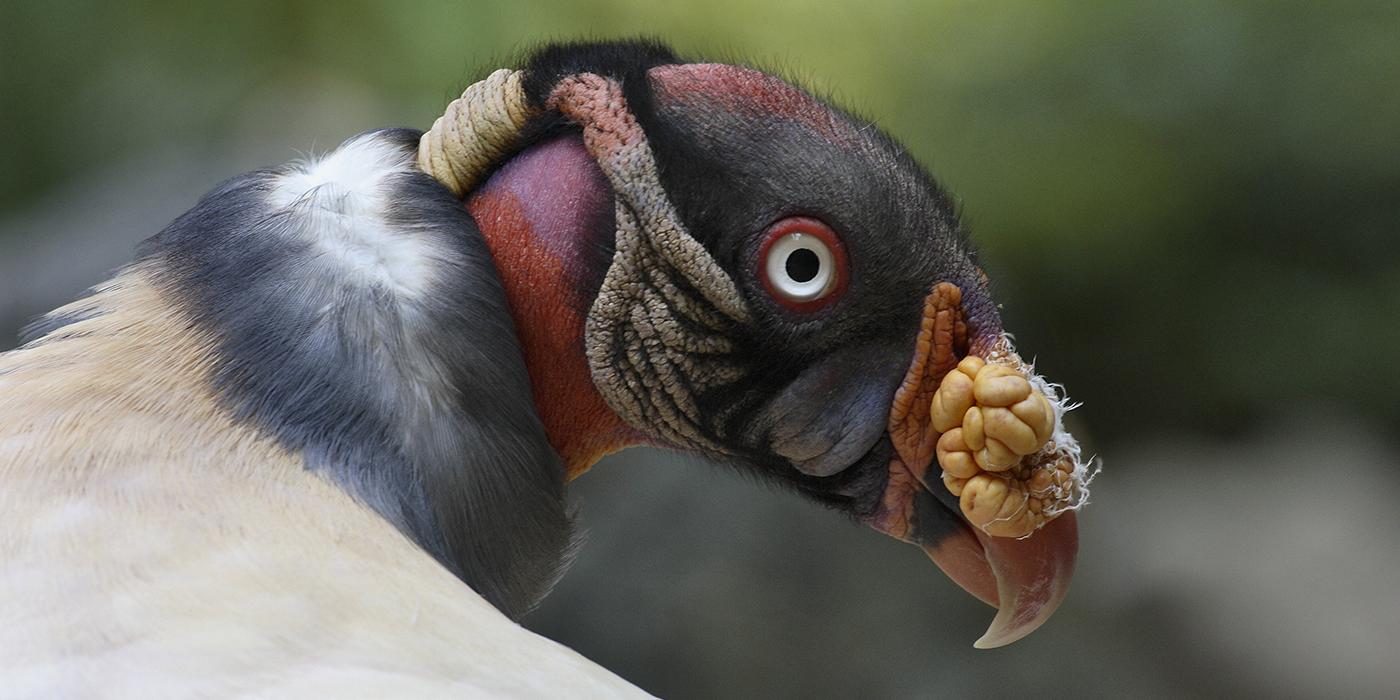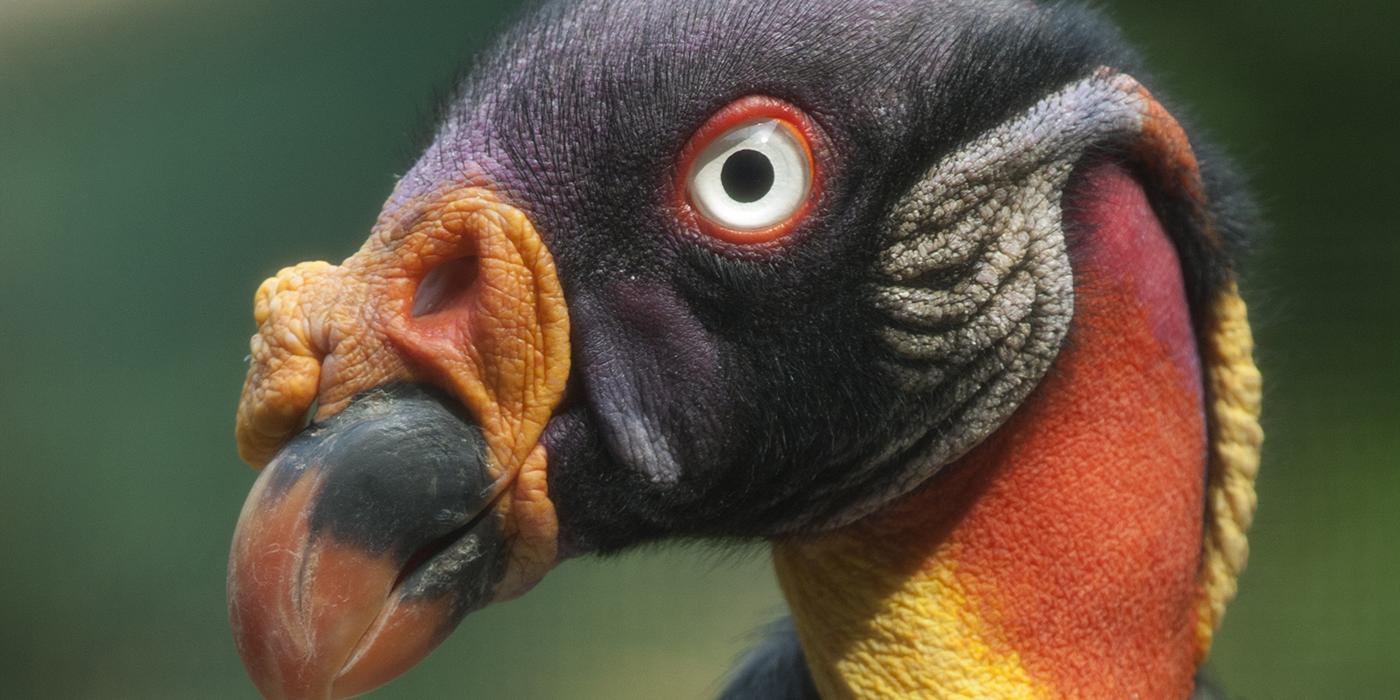Physical Description
The king vulture has short, broad wings. From the neck down, it is white with a black band running along the rear edge of the wings. A small collar of feathers at the base of the neck is blackish-gray, while the bare skin on the head and neck is orange, green, yellow and purplish blue.
The crown is covered with small, bristle-like feathers, and the bird has a fleshy wattle directly above the nostrils. King vultures do not tolerate cold conditions well. Males and females look very similar to each other.
Size
King vultures grow to about 2.5 feet (0.8 meters) tall and can weigh up to 8 pounds (3.7 kilograms), making them the largest New World vulture, except for condors.
Native Habitat
These vultures range from southern Mexico to southern Argentina, where they prefer densely forested, tropical, lowland habitat.
Food/Eating Habits
King vultures eat carrion. They have a thick, strong beak which is well adapted for tearing, and long, thick claws for holding the meat. They have keen eyesight and good sense of smell, which they use to find their food.
When a king vulture lands, other birds make way for it. Though it appears to dominate over a feeding site, this vulture actually relies on other stronger-beaked carrion-eaters to initially rip open the hide of a carcass. Often the first at a carcass site, the king vulture will eat the eyes of the animal while waiting for the other vultures. Eyes are both highly nutritious and easy to reach before the animal's hide is opened.
Reproduction and Development
King vultures nest on the ground in tree stumps, hollow logs or other natural cavities. Their nest consists of very little material; usually just scratched out of the existing soil. The king vulture usually lays a solitary egg. Both parents share the responsibilities of incubation.
Conservation Efforts
Although king vultures are not yet listed as endangered or threatened, there has been a substantial decrease in wild populations largely due to habitat destruction.
Help this Species
- Reduce, reuse and recycle — in that order! Cut back on single-use goods, and find creative ways to reuse products at the end of their life cycle. Choose recycling over trash when possible.
- Share the story of this animal with others. Simply raising awareness about this species can contribute to its overall protection.
- Are you a student? Did you love what you learned about this animal? Make it the topic of your next school project, or start a conservation club at your school. You'll learn even more and share the importance of saving species with classmates and teachers, too.
Animal News

Leaf-tailed Gecko Treated for Skin Cancer With Chemotherapy





